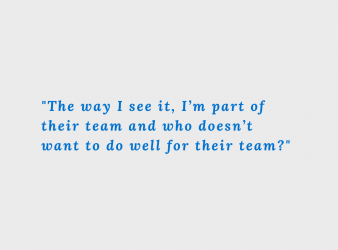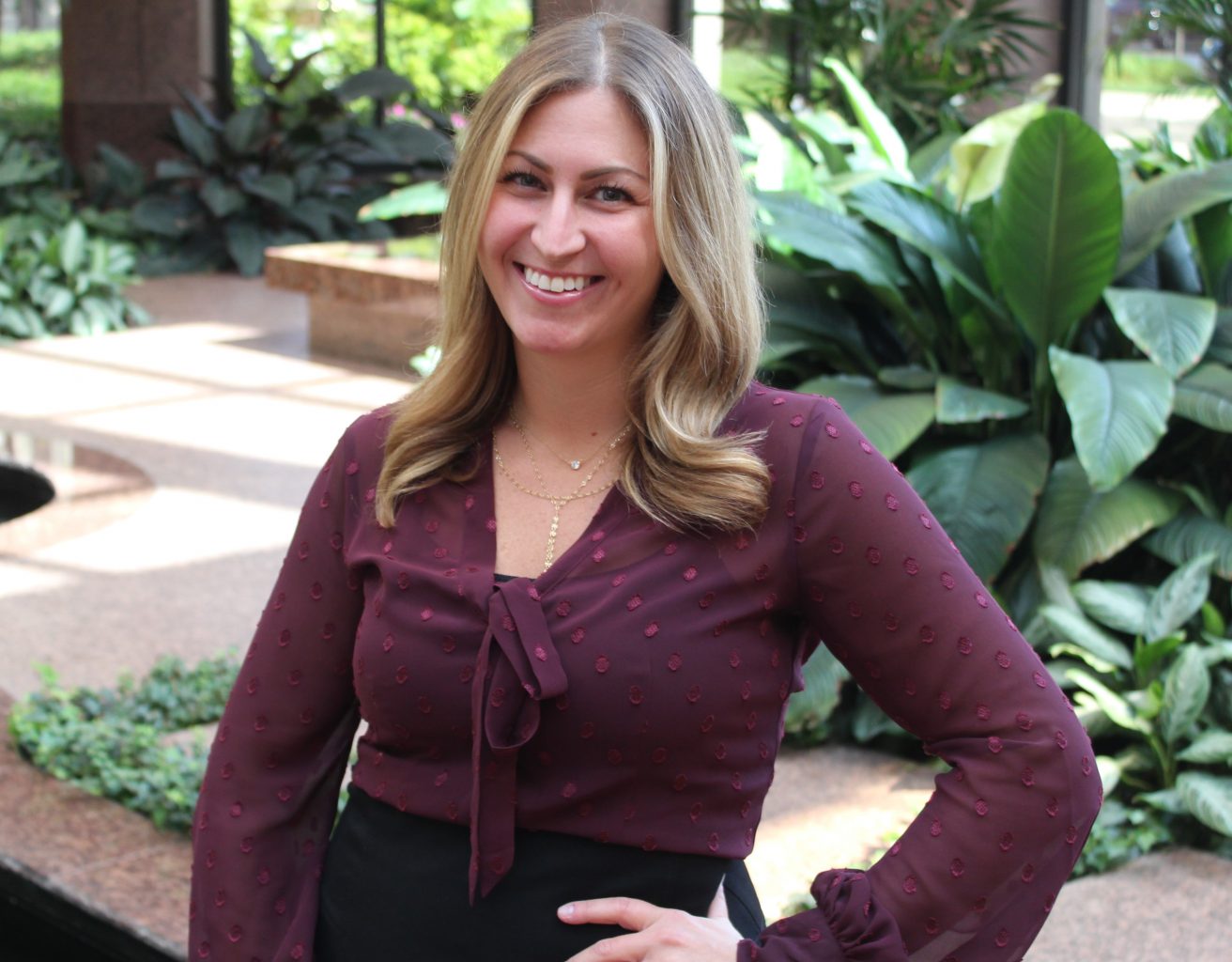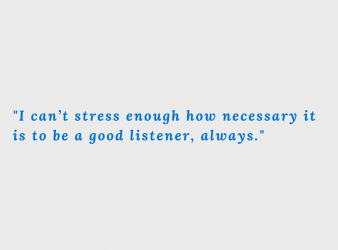September 11, 2018
Nicole Barracca, a Mindsight Technical Account Manager (TAM), sat down with Siobhan Climer, Mindsight’s Science and Technology Writer, to provide insights into the TAM Role. TAMs are responsible for maintaining strong relationships with clients, managing customer accounts and, communicating across multiple channels with engineers and clients. And since the heart of Mindsight is the bonds we form, the TAM role is essential to our continued success.
Insights Into Service Delivery Team And The TAM Role
SC: What exactly is a Technical Account Manager – or TAM?
A Technical Account Manager serves as the communication point between the client and the Service Delivery Team. It’s my job to build and maintain strong relationships with our customers and become an advocate for them to make sure that, above all else, they get the best customer service that I, and Mindsight, can deliver.
SC: What is the Service Delivery team and how does the TAM role intersect with the team and clients?
 The Service Delivery team is made up of our incredibly smart engineers. They are the ones responsible for ensuring our customers’ environments are fully supported, and they respond to any alerts or issues that arise, whatever the issue. The TAM role is really the contact point between clients and the team, taking in our customers tickets, analyzing and comprehending what the issue is precisely, and then determining how best to engage the Service Delivery team in solving the problem as quickly, efficiently, and completely as possible.
The Service Delivery team is made up of our incredibly smart engineers. They are the ones responsible for ensuring our customers’ environments are fully supported, and they respond to any alerts or issues that arise, whatever the issue. The TAM role is really the contact point between clients and the team, taking in our customers tickets, analyzing and comprehending what the issue is precisely, and then determining how best to engage the Service Delivery team in solving the problem as quickly, efficiently, and completely as possible.
SC: What skills do you think are necessary to be a successful TAM?
When it comes to my role, there are a number of skills needed. Some are obvious, like active listening and organization. Others are embedded in the day-to-day work, like an ability to multi-task and to truly care about the work you do.
I can’t stress enough how necessary it is to be a good listener, always. You are constantly meeting with clients who are working on all sorts of projects, and those customers are plagued by different issues on a daily basis. When they reach out with an issue, the first step is to listen and find out what we need to do. Every one of our customers has different business needs and unique challenges, and it’s the TAM’s responsibility to understand those needs and challenges and communicate them to the engineers and team members who will respond.
SC: How does organization and multi-tasking work into the TAM role?
While we’d all love to have days where we can maintain focus on one task or project long enough to bring it to completion without interruption, everyone knows that it isn’t often the reality. You need to jump from one task to another, and then come back to your original task, picking up where you left off seamlessly.
If I’m working on a presentation for Customer A, but a critical issue comes up for Customer B, I have to put the presentation on hold to make sure that critical issues gets resolved first. There are even moments where several of your customers are all experiencing critical issues at once and you’re working with the rest of the Service Delivery team to make sure all of that gets coordinated appropriately.
I believe I’ve always been a great multi-tasker – I credit that to being raised in an Italian family where there are six separate and overlapping conversations going on at the dinner table, and you’re learning not to miss a beat with any of them! But in all seriousness, that really has trained me to keep all the balls in the air without a drop. It can be stressful worrying about multiple things all within the same time frame, but it’s a worthwhile skill to have because, in my role, it means none of my customers wait longer than necessary since I’m able to help more than one of them at once. For them, every moment is critical – every moment means money lost. If their network is down, if they can’t do their jobs – I can’t be the stopgap to their business. Organization and being able to multitask mean I can provide the service our customers expect.
Client Advocates
SC: How does the TAM role build relationships with clients?
When someone calls me, it’s normally because there’s an issue. It’s not usually to say, “Hey, you’re doing a great job, and I just wanted to say thanks”. Those calls do happen, which always feels good, because it means we’re doing something right. But the reality is, clients call more when they have questions or issues. And when you’re dealing with a client’s issue, things can get intense. That’s when the relationship becomes key. Like any relationship, you really have to work at building trust. It’s not something that’s happens overnight. You have to nurture it and do your best every day.
It’s all about empathy. You need to identify with what they’re going through. That can be hard sometimes, especially if you don’t understand the exact situation. We’re a company based on communication, though. Our values are transparency and trust. If you don’t live that, you can’t provide that kind of service. You really have to own that. You must live that to build relationships with clients. There are no two-ways about it.
SC: Building those relationships with clients must have a proactive approach as well. How do you engage customers proactively in the TAM role?
 The TAM role exists, not only to triage issues that inevitably arise in our clients’ environments, but also to have positive and proactive conversations. The TAM helps our customers think strategically. We add a lot of value to our customers by being proactive, not simply reactive, and these types of conversations are a lot more positive. And since we’re taking this approach often, not only do our clients view us as more than “fixers”, they also know they can count on us to provide expert guidance, alert them to any changes or adjustments they need to make in their environments, and help them plan for the future. They’re seeing us as a positive resource that they can depend on and trust that we have their best interests at heart.
The TAM role exists, not only to triage issues that inevitably arise in our clients’ environments, but also to have positive and proactive conversations. The TAM helps our customers think strategically. We add a lot of value to our customers by being proactive, not simply reactive, and these types of conversations are a lot more positive. And since we’re taking this approach often, not only do our clients view us as more than “fixers”, they also know they can count on us to provide expert guidance, alert them to any changes or adjustments they need to make in their environments, and help them plan for the future. They’re seeing us as a positive resource that they can depend on and trust that we have their best interests at heart.
SC: What does your daily schedule look like?
Meetings, meetings and more meetings! Both with customers and with our internal teams. I meet with most of my customers on a weekly basis, so that keeps me pretty busy. When I’m not on a call or in an onsite meeting, I’m checking my customers’ tickets, checking open projects we might be working on with them, and working with the Service Delivery Team to keep on top of what’s going on in my customers’ environments.
We’ve also started delivering business reviews to our customers, so preparing those presentations has filled in any open gaps there might have been in the past. When needed, I also help with service requests. It’s a rare day when you’re watching the clock … most of the time, I can’t figure out how 5 o’clock came around so fast!
Mindsight’s Heart
SC: What does collaboration and teamwork look like at Mindsight?
Honestly, this is one of the things I love most about working at Mindsight – teamwork is ingrained in our culture. I work closest with the Service Delivery team, but I collaborate with every department within our company, which wasn’t even a possibility in my previous work. Communication is a big deal here – whatever discussion it is, we make sure that everyone has all the necessary information, that everyone knows and is prepared for the next steps to reach our goal, and that all team members are on the same page. That’s how we provide the service our customers have come to expect.
SC: You seem to have a philosophy about work that weaves into the values of Mindsight. Can you give us some insights into how your philosophy of work affects your role as a TAM at Mindsight?
 I would argue the most important skill for the TAM role is honestly caring about what you’re doing. Not just caring about your job, but really caring about your customers and their needs. I guess that’s not really a skillset – it’s more of a personal value. Regardless, it matters when it comes to supporting your customers. We’re all someone’s customer and keeping in mind how you expect to be treated as a customer makes a big difference when you’re on the other end of the relationship.
I would argue the most important skill for the TAM role is honestly caring about what you’re doing. Not just caring about your job, but really caring about your customers and their needs. I guess that’s not really a skillset – it’s more of a personal value. Regardless, it matters when it comes to supporting your customers. We’re all someone’s customer and keeping in mind how you expect to be treated as a customer makes a big difference when you’re on the other end of the relationship.
It’s really important to me that I treat my customers with the same level of respect, service and investment in their experience that I would expect if I were them. The way I see it, I’m part of their team and who doesn’t want to do well for their team? You have to care enough to have the customer’s back and get the job done for them. If you approach the role that way, and give it your all, you know your customers are in the best hands possible.
Like what you read?
Contact us today to find out how our strategic operations can help your company meet its objectives.
About Mindsight
Mindsight, a Chicago IT consultancy and services provider, offers thoughtfully-crafted and thoroughly-vetted perspectives to our clients’ toughest technology challenges. Our recommendations come from our experienced and talented team of highly certified engineers and are based on a solid understanding of our clients’ unique business and technology challenges.
About The Author
Siobhan Climer, Mindsight’s Staff Technology Writer, writes about technology trends in education, healthcare, and business. She previously taught STEM education programs in the classroom and at The New England Aquarium in Boston, MA. Siobhan writes extensively about disaster recovery, cloud services, backups, data storage, network infrastructure, and the contact center. Find her on twitter @techtalksio.


